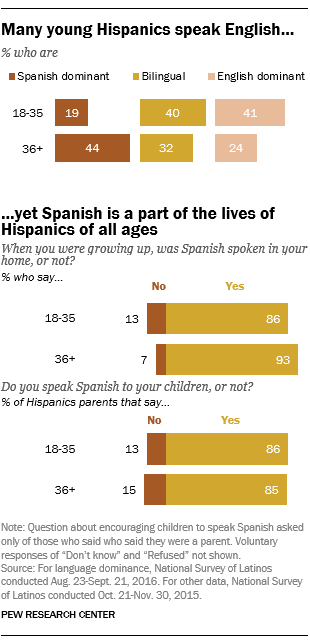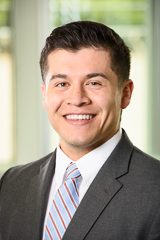
Youth is a defining characteristic of the U.S. Latino population. About six-in-ten Latinos (61%) in the U.S. were 35 or younger in 2016. The number of young Latinos –35 million – increased 20% from a decade earlier, making it one of the largest and fastest-growing youth populations in the country. With a median age of 28, Latinos are also the nation’s youngest major racial or ethnic group. Here are some key facts about them:
Young Latinos are largely U.S. born. The U.S. born account for 81% of Latinos ages 35 or younger in 2016, compared with 42% of Latinos ages 36 or older. Those born in the U.S. are particularly young: With a median age of 20, many U.S.-born Latinos have not fully entered adulthood.
The population of the youngest Latinos, those under 18 years old, grew by 22% from 2006 to 2016, a Pew Research Center analysis of Census Bureau data finds. This growth helped keep the nation’s youth population steady at about 73 million over the past decade. During this time, the under-18 population of whites and blacks declined by 11% and 7%, respectively. Among Asian Americans, a group with a fast-growing population overall, the number of people under 18 years old jumped by 21%. But at 3.5 million, this group is far smaller than the under-18 Hispanic population (18.3 million).
Latinos accounted for 25% of the nation’s 54 million K-12 students in 2016, up from 16% in 2000. In 14 states, Latinos accounted for at least 20% of K-12 students in 2016, up from six states in 2000, according to Census Bureau data. States new to this list in 2016 are Connecticut, Florida, Illinois, New Jersey New York, Oregon, Rhode Island and Washington. Latinos account for about half or more of all K-12 students in three states – New Mexico (61%), California (52%) and Texas (49%).
Hispanic intermarriage rates tend to be higher among younger adults than they are among older adults. About 28% of Hispanics ages 18 to 35 are married to someone who is not Hispanic, compared with 19% of Hispanics ages 36 and older, according to Pew Research Center’s 2015 National Survey of Latinos. Among young adults, more than half (58%) of third generation or higher Hispanics are married to someone who is not Hispanic, compared with 36% of the second generation and just 5% of immigrants.
About 14% of Americans ages 18 to 35 with Hispanic ancestry do not identify as Hispanic. The share who do not self-identify as Hispanic rises to about 25% among third-generation young adults with Hispanic ancestry. Among the fourth generation or higher – the U.S. born with both parents and all four grandparents born in the U.S. – more than half (56%) of young adults with Hispanic ancestry do not self-identify as Hispanic.

English use is on the rise among young Hispanics. Still, about six-in-ten say they use Spanish, according to Pew Research Center’s 2016 National Survey of Latinos, which asked Hispanics to rate their own ability to speak and read Spanish and to speak and read English. Similar shares of young Hispanic adults are either English dominant (41%) or bilingual (40%), while 19% are Spanish dominant. By contrast, among Hispanics ages 36 and older, a lower share is English dominant (24%), with higher shares rating themselves bilingual (32%) and Spanish dominant (44%).
Many young Hispanic adults heard Spanish spoken at home while they were growing up, and today they speak Spanish to their children. About 86% of young Hispanic adults said Spanish was spoken in their home when they were growing up, similar to the share of older Hispanics who said the same (93%), according to the 2015 survey. Among young Hispanic adults who are parents, 86% say they speak Spanish to their children, with a similar share of older Hispanic parents (85%) saying the same.
Though Spanish use is widespread, most young Latinos said you don’t have to speak Spanish to be considered Latino. About 76% of Latinos ages 18 to 35 said it was not necessary to speak Spanish to be considered Latino. A lower share of older Latinos (67%) said the same.
Young Hispanic adults believe in core parts of the American dream. More than three-in-four Hispanics ages 18 to 35 (77%) said most people who want to get ahead can make it if they’re willing to work hard, while only about 23% said hard work and determination are no guarantee of success for most people. When asked about their children’s future, about 75% of Hispanics ages 18 to 35 said that when their children are adults, their standard of living will be much or somewhat better.


